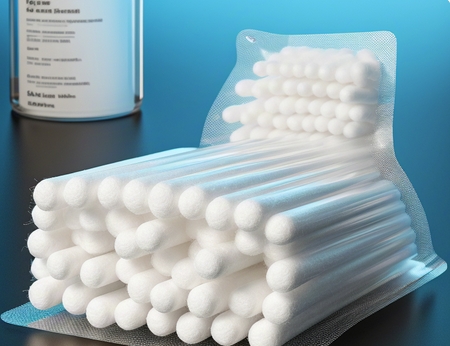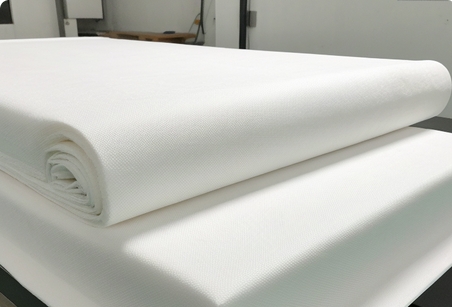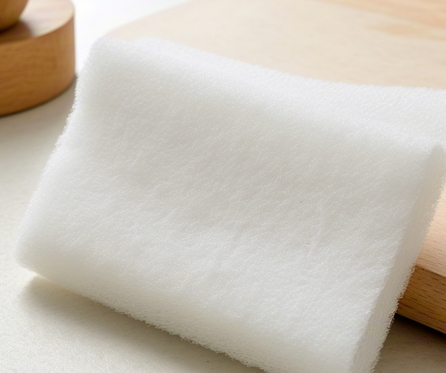Language

In ultra-clean environmental operations such as microelectronics manufacturing, biomedicine and precision optics, the performance parameters of professional-grade wipe consumables have become key factors affecting yield rates. As an innovative solution in the field of industrial cleaning, woven dust-free cloth is gradually replacing traditional cleaning materials with its unique process characteristics and becoming a strategic consumable choice for high-end manufacturing companies. According to the 2024 industry white paper data, the annual compound growth rate of this category in the domestic semiconductor industry has reached 23.6%, confirming the market recognition of its technological advantages.
Analysis of microscopic differences in weaving process is different from the manufacturing principle of conventional textiles. The weaving method of cleaning room-specific wipe materials directly determines its physical characteristics. When using the weaving process, the warp and weft yarns are precisely interwoven at a vertical angle of 90 degrees to form a regular grid structure similar to an integrated circuit board. In contrast, although the elastic coil structure formed by the knitting process has the advantage of extension, microfiber residues may occur when wiping precision parts. Authoritative inspection data show that the fiber residue of woven dust-free cloth is only 1/8 of that of knitted products, which is particularly important in nonlevel cleaning scenarios such as wafer surface treatment.
2. Engineering verification of core technology advantages 1. The zero fiber migration characteristics can be seen through electron microscope observation that the woven structure accurately controls the single fiber fracture length at the 80 micron level. In the actual tests of semiconductor companies, after 500 wipes on the surface of the 12-inch wafer, the reduction rate of particulate pollutants with particle size >0.1μm reached 99.97%, which fully complies with the ISO Class 2 clean room standards.
3. Chemical resistance performance breakthrough After ASTM D543 standard test, after the polyester/cotton blended woven fabric is continuously exposed in a highly corrosive environment (such as a 32% concentration isopropanol solution) for 120 hours, its tensile strength remains above 97% of the original value. The sterilization verification of medical companies shows that the material can withstand pulsating vacuum sterilization conditions of 132℃ and 0.22MPa.
4. Precision thickness control technology uses laser thickness gauge to detect and display, and by adjusting the warp yarn density (120-200 pieces/inch), 0.05mm thickness tolerance control can be achieved. Production data from an optical lens manufacturer confirmed that after using customized woven dust-free cloth, the yield rate of the coating process increased by 14 percentage points.
5. Technical adaptation for typical application scenarios 1. Advanced semiconductor process In 3D NAND flash memory manufacturing, the unique checkerboard structure of woven fabric can effectively remove nanoscale residues in the 96-layer stacked structure. A process improvement report from a memory chip company shows that after using customized woven consumables, the wafer scrap rate is reduced by 0.8‰, and the annual cost savings exceed 12 million yuan.
6. In-depth maintenance of medical equipment. The maintenance manual of the Da Vinci surgical robot clearly stipulates that joint module cleaning must be made of woven materials certified by EN 16442. Clinical data show that using professional-grade dust-free cloth for instrument maintenance can control the postoperative infection rate below 0.03%.
7.Intelligent manufacturing of new energy batteries. In the winding process of 4680 batteries, the NMP solvent-resistant woven fabric can work continuously for 8 hours without causing fibers to fall off. The production log of a leading battery company shows that compared with traditional materials, woven consumables reduce the standard deviation of electrode coating uniformity from 1.8% to 0.7%.
8. Industry technology evolution trend According to SEMI's latest industry forecast, the global market size of semiconductor woven dust-free cloth will exceed US$2.8 billion in 2025. It is worth noting that with the popularization of EUV lithography technology, the research and development of special coating wipes for the 13.5nm extreme ultraviolet band has become the new focus of the industry. Experimental data from a material giant shows that its newly developed graphene composite woven fabric can extend the maintenance cycle of lithography mirror group by 40%.
As precision manufacturing enters a new era of atomic precision, the technological iteration of woven dust-free cloth continues to break through the physical limits. From the assembly of quantum computer components to the maintenance of space station optical systems, industrial consumables that blend materials science and precision weaving technology are redefining the standard paradigm of cleaning processes.
Clean barriers in the field of precision manufacturing: analyzing the technological breakthroughs and application practices of woven dust-free cloth
In the field of precision manufacturing, there are amazing common needs for the manufacturing process of 0.3mm medical catheters and 12-inch wafers - these micron-level clean environments require precise protection by relying on special woven dust-free cloths. According to the 2023 inspection data of the China Textile Industry Federation, the amount of fiber shedding of dust cloth products using the new warp and weft knitting process has been reduced by 78% compared with traditional products, and has successfully improved the particle control accuracy to the ISO level 5 clean standard (i.e., no more than 3,520 particles per cubic meter 0.1μm).
Authoritative test data supports product performance ISO 9073-10:2003 textile test standard shows that high-quality woven dust-free cloth must meet three core indicators at the same time: surface resistance value (1×10^4~1×10^9Ω), dust generation (≤0.1mg/m³) and liquid absorption speed (<1 second). It is worth noting that the 2023 yield report of an international semiconductor company shows that after adopting the new woven dust-free cloth, its 12-inch wafer production yield increased by 2.3 percentage points, which is equivalent to an annual increase in revenue of more than 10 million US dollars for a single production line.
Cross-industry application verification technology advantages In the medical field, in the 0.3mm minimally invasive catheter cleaning process, the surface friction coefficient of the woven dust-free cloth must be stably controlled in the range of 0.15-0.25 (ASTM D1894 test standard), which is equivalent to the delicateness of wiping precision watch parts with silk.
Tags:
RELATED RESOURCES

Should I choose 70% or 99% cleanroom cotton swabs?
Professional grade isopropyl alcohol cleaning tool operation guideIn the field of precision instrument mainten......
More

How to clean room with industrial dust-free cloth?
Guide to operating specifications for professional clean environment surface cleaningIn controlled environment......
More

9.9Inch dust-free wipe size specification: How ISO standards reduce consumable costs by 30%
Clean room cleaning revolution: Decrypting the scientific design of 9x9-inch dust-free wipesHistorical evoluti......
More

Industrial Steam Cleaners: Powerful Sanitization for Commercial Applications
Industrial steam cleaners represent the pinnacle of cleaning technology in commercial and industrial settings.......
More
Related Products
Room 101, Building 1, Angeer Factory, No.4, Hetian Road, Shatian Community, Kengzi street, Pingshan District, Shenzhen, Guangdong, P.R. China 518122
info@wipestar.com
+86-755-89616775
+86-755-89616773
Related Products
RELATED RESOURCES

Should I choose 70% or 99% cleanroom cotton swabs?
Professional grade isopropyl alcohol cleaning tool operation guideIn the field of precision instrument mainten.........
More

How to clean room with industrial dust-free cloth?
Guide to operating specifications for professional clean environment surface cleaningIn controlled environment.........
More
WIPESTAR
微信官方公众号